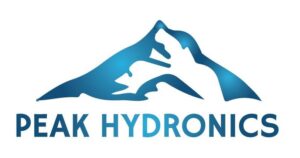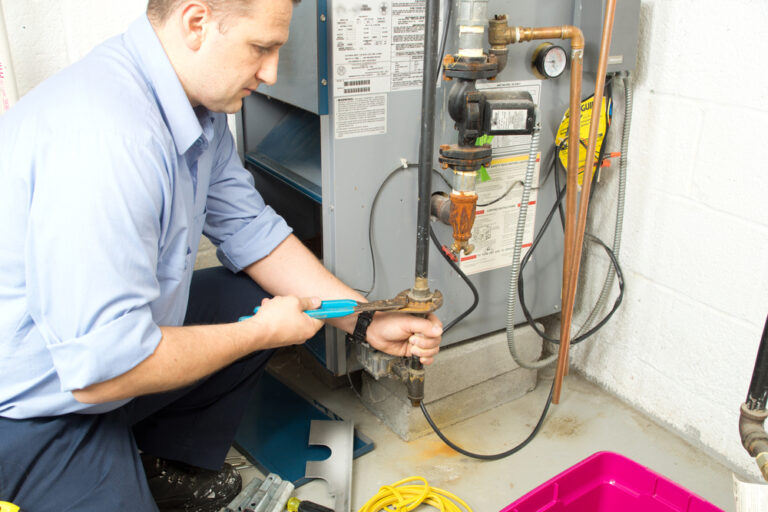Did you know that heating costs typically eat up around 42% of your energy bill?
That’s a large chunk of your utility costs and the number one culprit is a furnace system that doesn’t work as it should.
Furnace units that have to work harder to produce heat cannot work efficiently. For this reason, if you’re experiencing inconsistent temperatures throughout your home, it’s time to look at repairing or replacing your unit.
One of the biggest determining factors in whether to repair or replace a furnace has to do with the unit’s age. Otherwise, it’s a matter of comparing repair costs to the cost (and savings) of installing an upgraded unit.
How Long Does a Furnace Usually Last?
A furnace will typically last about 15 to 20 years with proper upkeep and maintenance. However, that doesn’t mean you need to turf your furnace just because it’s reached this age.
It simply gives you a good indication of whether you should consider upgrading it or completely replacing it.
To find out the age of your furnace, look for the manufacturer serial number on the inside of the furnace cover. You can contact a heating professional to find the manufacturing date.
If your furnace is older than 15 years, it may be time to have the unit inspected to determine its condition.
Should the unit be in a state of disrepair, and you find yourself spending a significant amount of money on repairing it, it may be time to have it replaced.
Otherwise, if your furnace still has some life left in it, you can always look into having the unit repaired for the upcoming winter.
Repairing Your Furnace
If your unit is older, but you’ve never had to perform or pay for repairs, it may be worth trying these DIY fixes before replacing the entire unit:
- Check the thermostat. If there is no heat coming from your furnace, you may need to replace the batteries in your thermostat or check the circuit breaker to see if it’s been tripped.
- Replace the filters. Sometimes something as simple as a clogged filter can prevent your furnace from creating enough heat or force the unit to turn off and on too quickly. Replacing the filter is an easy task and may be enough to fix the issue.
- Give your furnace some space. When you crowd your furnace with stuff, it becomes a hazard and encourages more dust to clog the air filters.
- Check the flame. The pilot light in your furnace should be blue and steady. If the flame is yellow, your burners could be dirty. The burners should be cleaned once a year or replaced if necessary.
- Insulate the ductwork. Uninsulated ductwork can cause noises such as banging and knocking. Insulating the ducts may stop this issue.
Not everyone is a DIY-master when it comes to performing repairs on their furnace units. When in doubt, call in the professionals to carry out the repairs for you.
Peak Hydronic’s expert technicians are trained and knowledgeable in furnace inspection and repair. Allowing a professional to carry out repairs will save you not only time but can significantly extend the life of your furnace.
Replacing Your Furnace
Unfortunately, there are only so many repairs you can make to your furnace before laying the unit to rest and buying a new one.
The number one sign that it’s time for a new furnace is the frequency of repairs. If you find that repairs are becoming expensive, it may be time to upgrade.
While a replacement unit might initially cost more than repairing, you are looking at significant long-term savings.
Other than constant repairs, here are some other signs that your furnace may need to be replaced:
- Increase in energy bills. If you’re maintaining the same level of warmth in your home, but your bills are suddenly higher than usual, it means that there is an issue with your furnace and it is no longer working efficiently.
- Inconsistent temperatures. Once you begin to notice hot and cold spots throughout your home, this means your unit is not providing even heat.
- Excessive soot. Too much dirt or soot indicates that your furnace is producing too much carbon dioxide (not to be confused with carbon monoxide). This contributes not only to poor airflow but air quality as well.
- Rust and cracks. While repairs may be able to fix most issues with a furnace, signs of cracks and corrosion are harder to address. If there are signs of disintegration on the outside of your furnace, it can become a serious hazard.
While you may be hesitant to invest in an upgraded unit, that’s exactly what it is – an investment.
Modern furnaces are highly efficient and can save you significantly on repair costs as well as on your energy bill.
Plus, with advancements in technology such as smart thermostats, you can enjoy a comfortable home temperature at the push of a button. These thermostats can be programmed to maintain a specific temperature as well as turn off and on at specific times.
Lastly, you can expect a brand new furnace to last between 15 and 30 years, as long as you keep it properly maintained.
Ready to Upgrade?
If you’re ready to upgrade your furnace to a newer and more efficient model, our expert HVAC technicians are ready to install it for you!
We can help you choose the right furnace for your home and install it right away.
Let’s get in touch – contact us today!

